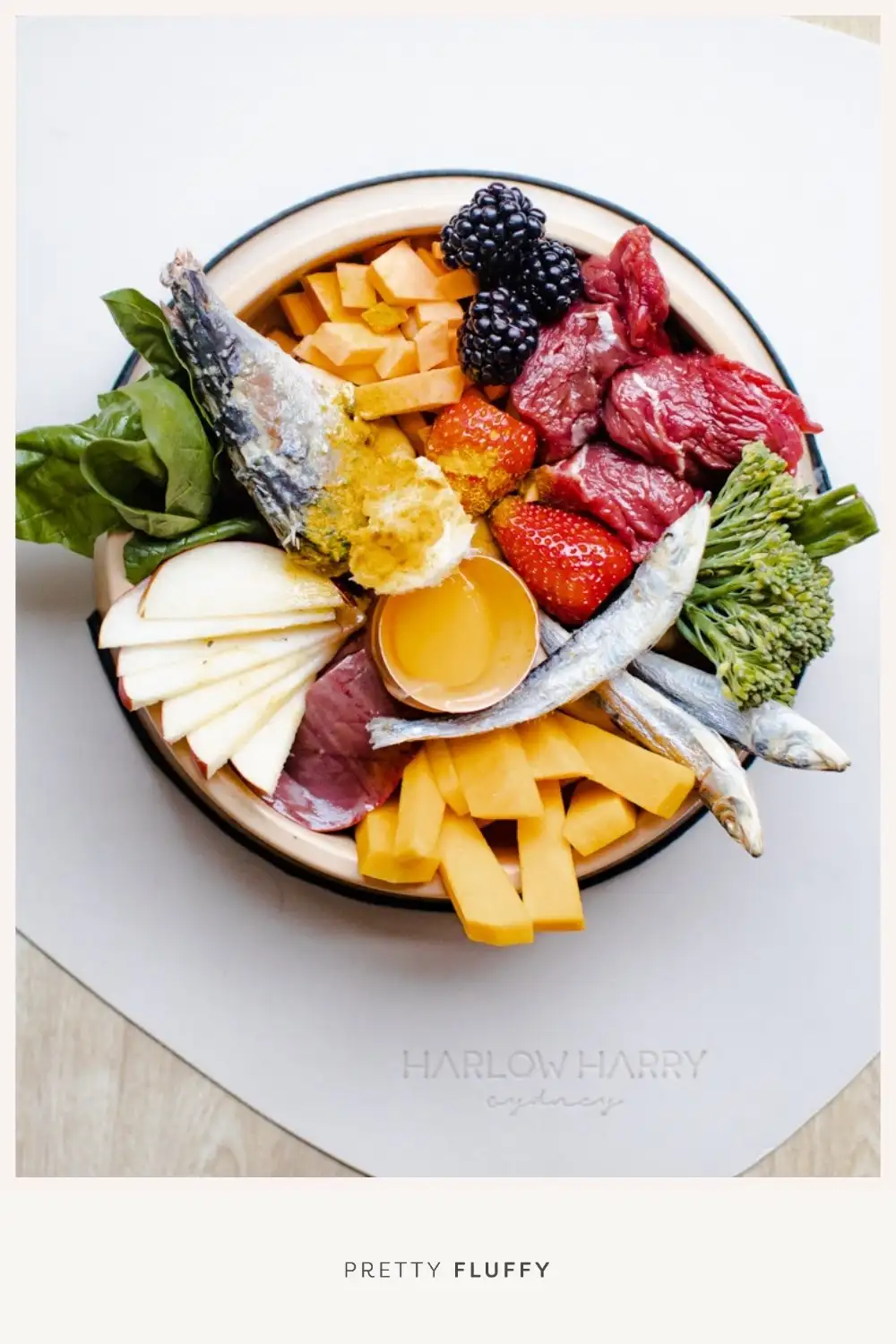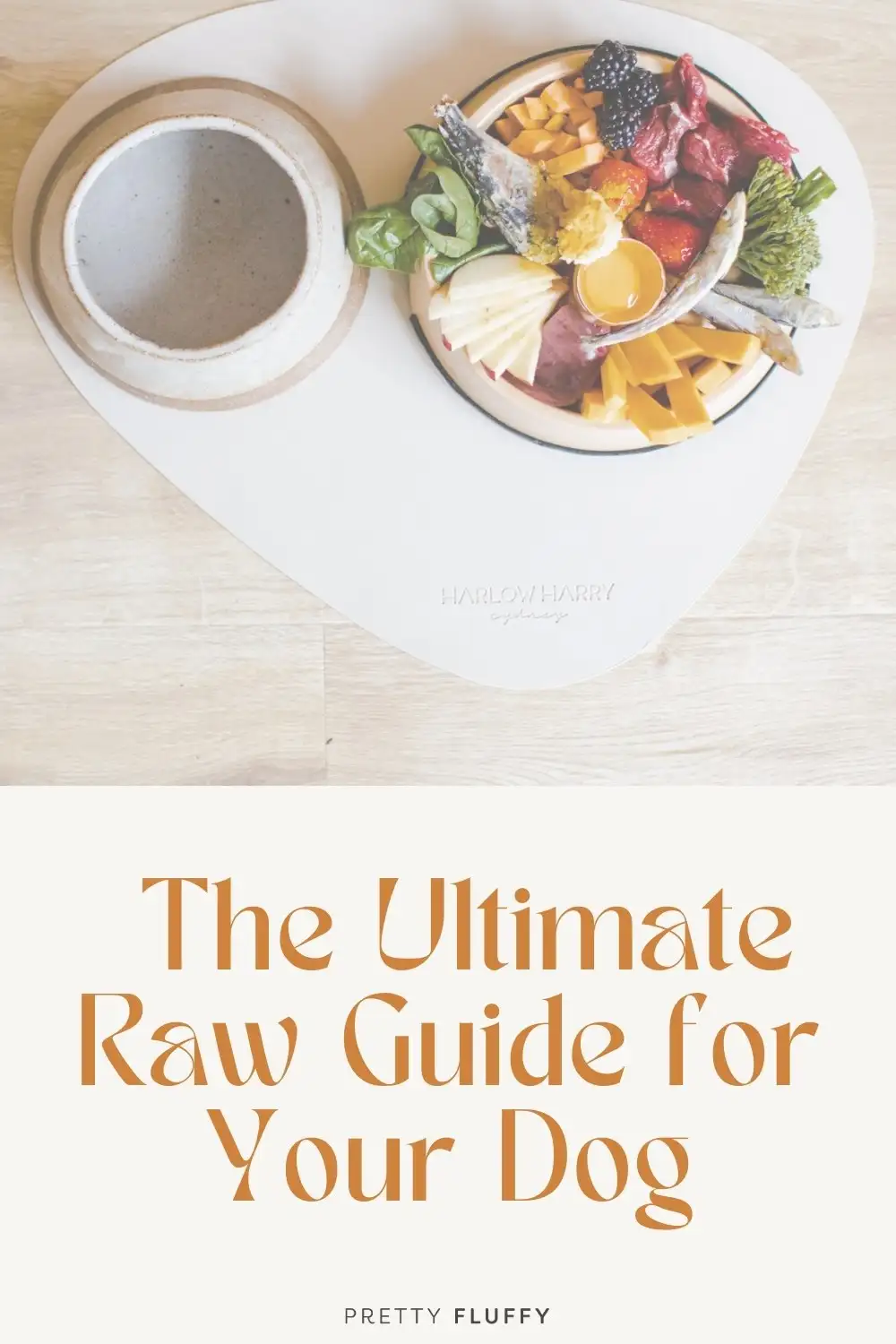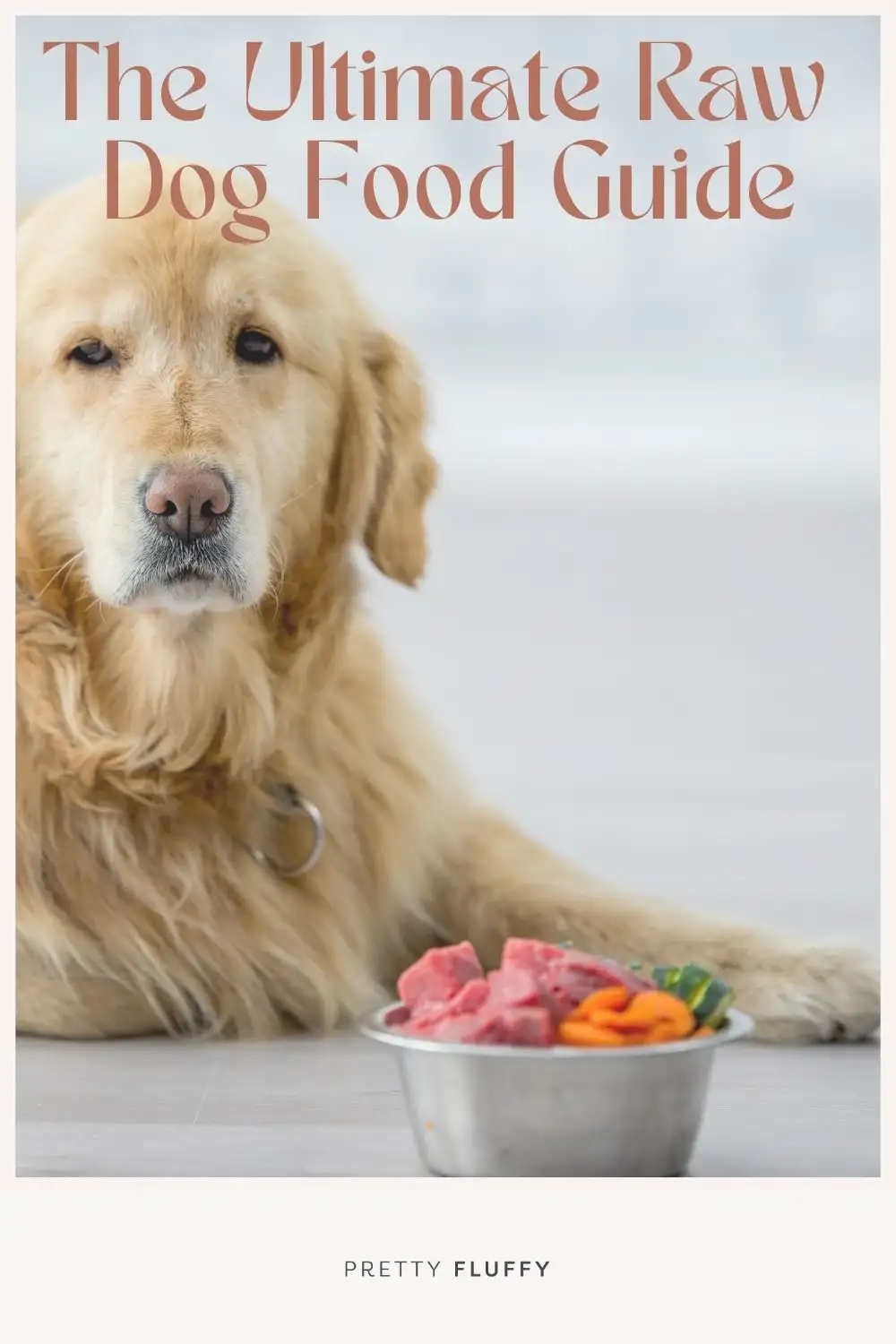
Health & Wellbeing
Raw Dog Food for Beginners: The Ultimate Raw Guide
All the answers to your raw dog food questions, right here.
‘Is raw meat good for dogs?’
‘How much raw food do I feed my dog?’
‘How do I even start my dog on a raw food diet…?!’
Yep, feeding raw dog food for beginners can sure be daunting! And understandably, you’ll want plenty of questions answered before changing up your pup’s meal plan.
We know, because we feed raw to our two boys. And we had soooo many questions at the start.
In recent years, feeding a raw food diet has become a growing pet health trend for pet parents looking for a more healthy alternative to processed commercial pet foods.
So, if you’re considering introducing raw food into your dog’s diet, you’re certainly not alone! And if you’re unsure about where to start with making the switch to raw, this simple and stress-free guide to raw dog food for beginners has you covered.
Here we’ll answer all your raw dog food questions, so you can confidently decide if feeding raw food is the right decision for your best friend.

A Guide to Feeding Raw Dog Food for Beginners
Firstly, if you’re worried that feeding your dog a raw diet is too complicated, time-consuming or expensive…let’s kick those thoughts to the curb right here and now!
Here’s why switching to raw dog food is less stressful than what you may think:
The benefits: Why you should feed your dog raw
Before we get to all your burning questions, let’s look at the benefits of feeding a raw food diet – and there are plenty of them!
Basically, a raw dog food diet is all natural – offering the right balance of vitamins and minerals your dog needs to live their healthiest life.
While it’s true there are some risks to raw feeding, with careful research and preparation, those risks are very minimal.
Is feeding raw meat good for dogs?
Raw meat is a natural part of a dog’s diet. While the answer is yes, dogs can eat raw meat – a diet consisting only of raw meat won’t give your dog the balanced nutrition they need.
A natural raw meat diet appeals to many pet parents, simply because it was the natural diet of your dog’s ancestors – the wolf.
While dogs may not be exactly the same as wolves, they do share 99.8% of the same DNA, and do have very similar dietary requirements.

Fast forward to the present, it’s become the norm for dogs to consume less raw meat. In its place is processed commercial pet food, that is cooked at high temperatures to remove any harmful bacteria like Salmonella, Listeria and E. coli.
However, this process also removes many nutrients from the meat – which then needs to be supplemented.
So, while it’s true that feeding raw meat is good for your dog, your dog’s diet should contain other minerals, vitamins, amino and fatty acids, and sources of fiber to aid with digestion.
This can be done by introducing eggs, vegetables, and pet supplements to their predominantly raw meat diet.
MUSCLE MEATS ORGAN MEATSRaw meat good for dogs:
What are the risks of feeding dogs raw meat?
If you’re concerned about harmful bacteria in raw meat, it’s useful to know that parasite contamination is far more likely in wild animal carcasses than raw meat fed to dogs.
Before feeding raw meat to your dog, it’s best to divide the meat into portions and freeze it. Freezing meat kills off any bacteria and parasites (should they be present), without removing the nutrients in the meat.
You’ll then need to defrost the raw meat prior to feeding it to your dog by leaving it in the refrigerator overnight.
Taking health and safety precautions when handling raw meat, such as washing your hands thoroughly afterwards, and cleaning and disinfecting all surfaces and objects that come into contact with the meat, will avoid contamination and minimize any potential health risks.

Can dogs eat raw vegetables?
‘Can dogs have raw carrots?’ or ‘can dogs have raw broccoli?’ are questions you’ve likely asked yourself upon finding vegetable scraps in the back of the fridge!
Again, it’s important to know that a raw food diet for dogs isn’t meat-only. Vegetables are an important source of fiber, vitamins, minerals and antioxidants when feeding your dog a raw diet. Plant ingredients support digestion and the balance of healthy bacteria in your dog’s gut. In fact, some vegetables are a superfood for dogs!
So, how to prepare vegetables for dogs? Veggies can be boiled, steamed, or raw – though they maintain higher concentrations of nutritional value when fed raw. Either your dog will like the taste of raw vegetables, or if they’re a little fussy, you might need to chop or grate them into small pieces and mix in with their meat.
Are fruits good for dogs?
With the focus on protein and veggies, dog-friendly fruits are often a forgotten addition to your pup’s diet.
However, an ideal raw food diet for dogs consists of all three food groups – raw meat, vegetables – and fruit!
While there are many health benefits of fruit for dogs such as boosting the immune system, reducing inflammation, improving digestion and promoting skin and coat health, dogs should only eat certain fruits in moderation. For a detailed breakdown of the health properties of each fruit, see 10 Superfood Fruits for Dogs.
So, which fruits are safe for dogs to eat? Here’s a quick list of dog-safe fruits below – just be sure to remove any pits, seeds or rind present!
TIP: Get access to 30 fun and simple fruity dog treat recipes with the popular eBook, Frozen: Fresh & Fruity Dog Treat Recipes Your Pup Will Love!Best fruits to feed dogs:
What foods to avoid when feeding your dog a raw diet?
While fresh vegetables, fruits and meat are needed for a healthy and balanced raw food diet for your dog, there are certain foods that should be avoided while feeding raw.
Vegetables like avocado, onions, mushrooms, and raw potato are toxic to dogs and should be avoided in their diet. Dogs can eat cooked potatoes, but only in very small amounts.
Unripened tomatoes, cherries, and grapes are all toxic to your dog and should be avoided. When thinking about a new source of vitamins and minerals in the form of fruits or vegetables, always do your research first!

What is the best raw dog food diet for dogs?
While technically there isn’t a best raw dog food diet, the two most popular raw food diets for dogs are the BARF diet (Biologically Appropriate Raw Food Diet) and the Prey Model diet.
Both diets have been around for many years and are a great option for most dogs.
The BARF Diet was designed to provide a balance of essential nutrients dogs need. The recommended guidelines for a BARF diet consists of 70% muscle meat, 10% raw edible bone, 7% vegetables, 5% liver, 5% other secreting organs, 2% seeds or nuts, and 1% fruit.
The Prey Model Raw Diet for dogs is favoured by pet parents who prefer their dog’s diet to resemble the natural diet of a carnivore. The recommended guidelines are 75-80% muscle meat, 10% raw edible bone, 5% liver, 5% other secreting organs, and 0-5% animal based fiber.
The above raw food diets are an excellent guide for your dog’s raw food meal plan. However, if you find the percentages a little overwhelming, see this simple three-step raw dog food plan that is perfect for beginners.

How to safely switch to a raw dog food diet?
Switching your dog to a natural raw food diet is quite simple. Raw feeding is often considered important in dog breeding, since proper nutrition supports healthy puppies right from the start. But, knowing how to start your dog on a raw diet – and whether to make the transition quick or slow – is one of the most common questions among pet parents
For the majority of dogs – including puppies, young and healthy dogs – transitioning to raw dog food can simply be done overnight (ie. Monday they might have kibble, Tuesday the raw food begins).
However, if your pup is a senior dog, has allergies, or is on a commercial diet, switching over to raw should be a gradual process to avoid any stomach upsets. If your dog’s gut is used to processed food only, the sudden change to raw meat and vegetables might shock their system.
Therefore, the best way to transition to a raw food diet is to gradually wean your dog off their current food, over a period of around 7 days. Depending on their age and health, it may take anywhere from 3 days to 2 weeks for your dog to make the full transition.
So, how to start your dog on raw food for beginners like yourself? Here’s an easy daily guide:
DAY 1-3: 20% raw food, 80% current food DAY 4-6: 40% raw food 60% current food DAY 7-9: 60% raw food 40% current food DAY 10-12: 80% raw food 20% current food DAY 12+: 100% raw food (This is just a rough guide – you don’t have to follow the percentages exactly! The main goal is to increase their raw food intake slowly over 2 weeks, until you reach 100% raw food).

How much raw food should you be feeding your dog?
Knowing how much raw food to feed your dog everyday can be calculated based on your dog’s body weight.
Generally speaking, you should feed your dog 2-5% of their body weight in raw food on a daily basis. Where they fall in that range will depend on their weight, health, and activity levels.
If you’re preparing meals from scratch, this raw dog food feeding guide by Australian raw food company Raw & Fresh provides an excellent breakdown of feeding percentages based on body weight and activity levels.
There are also a wide range of raw dog food calculators online for puppies and dogs. Simply enter your dog’s age and weight and activity levels, and the amount of raw food needed daily will be calculated for you.

Final tips: How to save on the cost of a raw food diet for dogs
- If you plan on preparing raw dog meat yourself, it will likely save you time and money to bulk buy, portion, then freeze. An easy way to do this is by shaping your meat portions into balls or hamburgers.
- Find a good local butcher, as this will make feeding your dog much easier and cheaper.
- Know what to say to your butcher. Explain you are preparing a raw meat meal plan for your dog, and ask for suitable items like cheaper cuts, raw and meaty bones, chicken, wings, backs, offal (heart, kidneys and liver) and mince or scraps that aren’t too fatty.
We hope this guide on raw dog food for beginners has answered all your questions, and made you feel more confident in making the switch to a healthier and happier life for your best friend!
As you’re interested in feeding raw food to dogs, you might find these topics useful too: Or you can find more tips and information at our Health & Wellbeing section!BEFORE YOU GO…!
SOURCES:
‘What You Need to Know About Raw Food Diets for Dogs’: https://www.petmd.com/dog/nutrition/5-mistakes-people-make-when-feeding-pets-raw-food-diet
‘Raw Feeding Factsheet’: https://www.pfma.org.uk/raw-feeding-factsheet
‘Current knowledge about the risks and benefits of raw meat-based diets for dogs and cats’: https://pubmed.ncbi.nlm.nih.gov/24261804/
‘Nutrition and health of dogs and cats: evolution of pet food’:https://pubmed.ncbi.nlm.nih.gov/16244924/


Pretty Fluffy is the ultimate lifestyle destination for dog lovers. Discover the best designer dog brands and emerging small pet businesses, the latest dog accessories, healthy dog treat recipes, dog training tips and more. Thank you for being part of our dog-loving community!









Comments are off for this post